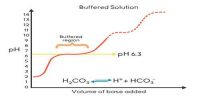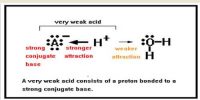Chemical equilibrium has the following important characteristics:
Chemical equilibrium is dynamic in the environment. The dependability of visible property in an equilibrium organism does not mean that the reaction has closed in total. After the accomplishment of equilibrium, the reaction does not end while it appears to have been stopped.
(a) At this state, the concentrations of all species remain unchanged if other factors like temperature, pressure remain constant.
(b) The rates of two opposing reactions become equal. This means that if products are formed from the reactants, exactly equivalent amount of reactants being formed from the products.
(c) The reaction can be started either from the reactant side or from the product side.
(d) For systems containing gaseous or volatile substances, the reaction should be carried out in a closed vessel. The system should be isolated, which means that nothing is allowed to enter or leave the system.
(e) Catalysts do not affect equilibrium because a catalyst affects the rate of the forward and reverse reactions equally.
(g) Equilibrium is affected by the change in temperature, pressure or concentration.
Limitations of Chemical Equilibrium
(a) It is not possible to know the time taken to attain the chemical equilibrium by observing the equation of chemical equilibrium.
(b) The equation of chemical equilibrium does not give a clear indication of the fraction of the reactants that are being converted to products at the time of equilibrium.















